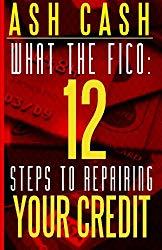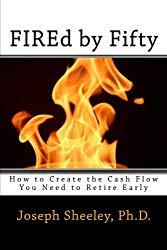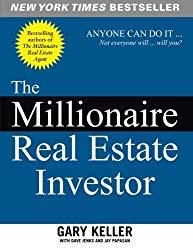The FICO score and pay stub have become the deciding factors when deciding if someone will make a good tenant or even a good driver. They make things simple. You need a FICO of 650 and an income of 3 times the monthly rent or payment to qualify. You can easily train employees to make the evaluation. It’s simple math.
But what if I told you that you were missing out on star tenants or star home buyers if you’re using these criteria? People who would pay ontime or early every month. People who wouldn’t have trouble during the next recession with the rent. And probably people who would treat your place well? Trustworthy people that your simple screening would turn away? People who actually have wealth, not just a high paying job that could vanish during the next economic slump.
(Note, if you click on a link in this post and buy something from Amazon (even if you buy something different from where the link takes you), The Small Investor will receive a small commission from your purchase. This costs you nothing extra and is the way that we at The Small Investor are repaid for our hard work, bringing you this great content. It is a win-win for both of us since it keeps great advice coming to you (for free) and helps put food on the table for us. If you don’t want to buy something from Amazon or buy a book, how about at least telling your friends and family about our website as a great place to learn about investing and personal finance. Thanks!)

The truth is, FICO misses these great renters because FICO is about being on debt. If you are always borrowing money, never paying things off, but paying ontime, your FICO will be high. If you’re buying things for cash, paying things off and then not getting more loans, your FICO won’t be as high, if you have a FICO score at all. Luckily there are ways to find these great lenders. Here’s what to look for:
Stock and Bond Portfolios
Stocks and bonds are assets – things that pay you money with little or no work on your part. This means that if your potential renter has a substantial stock or bond portfolio, it is like she has a regular job from which she cannot be fired. The question then becomes, what sized portfolio is “substantial?”
Many stocks and all bonds pay out regular payments to their holder. Bonds usually pay every six months, where stocks tend to pay quarterly. Mutual funds, which hold a portfolio of stocks and bonds within themselves, will sometimes pay monthly with a big payment at the end of the year. If you ask for a copy of the statement from their brokerage account, the broker will often include an estimate of the yearly income generated by the portfolio.

But dividends aren’t everything. Many stocks don’t pay large dividends, but their share price increases regularly over time as the size of the company grows. This means that your renter could sell some shares over time to generate income as well. So, just because he doesn’t have a lot of dividends on his balance sheet doesn’t make him a bad risk.
Rentals
Another great alternative source of income is a rental property. Maybe your potential renter owns a house she rents out or an apartment building herself. Obviously, any rents collected are income and should be seen as such after deducting a reasonable amount for property maintenance.
Like stocks, real estate also appreciates with time. If an individual has a portfolio of paid-for properties, he could sell a property to raise cash for living conditions. If a family is renting out their former home and they have that home paid off, they obviously could sell at some point to raise cash. If they still have a mortgage, that would reduce the income they have to potentially put towards rent.

Don’t Go by W2s or Tax Returns
Passive income does not necessarily show up in the same way as earned income. While dividends may show up on a tax return, a smart investor can use various tricks to reduce the amount of capital gains they have during a year. They may hold onto gains, allowing them to roll-over into future years and compound. When they do sell a stock at a gain, they may sell a losing position to offset the gain, avoiding taxes. The truth is, a very successful investor may have little or no income from his portfolio oh his tax return most years.
You also can’t just look at changes in portfolio value from year to year to judge income because it will vary greatly. A $2M portfolio may be up $400,000 on year but then down $300,000 the next. Over long periods of time the account will return about $200,000 per year, but it won’t be regular income. It will be ups and downs.
So, how do you judge ability to pay?
The rule of thumb is that someone can spend about 4% of the value of a portfolio per year and have that portfolio last indefinitely. It is like a mint plant where you can pick some leaves and it will grow right back. So if your potential renter has a $1M portfolio, it is like he has a job paying $40,000 per year. Actually, since they will pay lower taxes on the income and not pay payroll taxes at all, it is like they have a $50,000 per year job.
But you don’t need your renter’s portfolio to last forever. You just need it to last through the term of the lease. The worst stock market crash ever saw a 90% decline in stocks. Most bad recessions will take the market down by 40% or so. If your renter has a portfolio twice the size of the rent over the term of the lease, you’re probably OK. Four times would be even better. So if he’s renting an apartment for $1000 per month with a year-long lease, as long as his portfolio is worth $25,000 to $50,000, I would be comfortable making that rental. If he had a portfolio which had $12,000 in cash, I’d feel comfortable regardless of the rest since he’d be able to pay from the cash regardless of what the portfolio did over the year.
